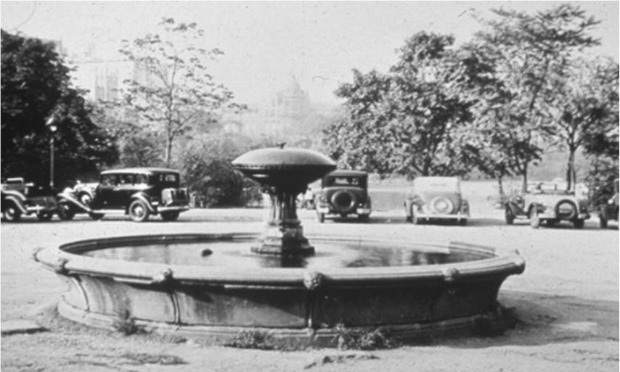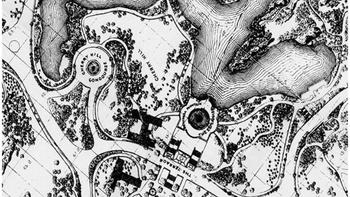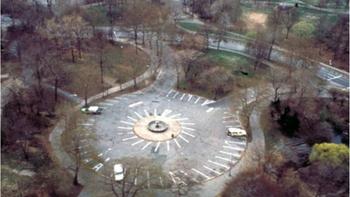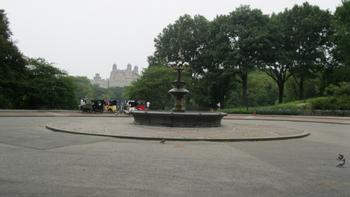A controversial renovation is going forward in Central Park. On Monday, the city's Public Design Commission approved a $1.4 million redesign of Cherry Hill, the lakeside concourse and fountain near 72nd St.
The project, first proposed this past Spring, hopes to correct the awkward traffic between pedestrians, horse-drawn carriages and pedi-cabs around the concourse. The concourse is popular with tourists for its classic vista of the city skyline towering over the Central Park lake.
“Right now, it’s like a human game of frogger,” said Dina Libner, a spokesperson for the Central Park Conservancy. “It’s dangerous and inconvenient for pedestrians.”
The current design has a largely unused central paved circle around the fountain, which is surrounded by an elevated brick circle used by horses and pedi-cabs. The new design will pave over the brick circle, make a single area for horses, and create a new pedestrian path with landscaping around the perimeter.
Cherry Hill has gone through several changes over the last century. Although intended as a scenic turnaround for carriages, by the mid-20th century it had become essentially a parking lot. In the 1980s, park officials sought to invigorate the area by creating the design that is currently in place.
According to Libner, the park's original architects would have approved of the new design.
“The way the concourse had developed in terms of design had really become a departure of [Frederick Law] Olmsted and Vaux’s original intentions, which was to be a way for carriages and pedestrians to view and interact with the lake,” said Libner.

In the mid-20th century, Cherry Hill became a glorified parking lot. (Photo courtesy of the Central Park Conservancy)
To date, several uptown preservation groups have voiced opposition to the project. Cristiana Peña, of the Upper West Side group Landmark West, believes the new design harkens back to the parking lot days of yore. She says the current design works and there’s no reason to mess with it.
“We look at all the layers of history in Central Park," said Peña. “One really builds on the richness of the next. Central Park was planned in the 1870s by Olmsted and over the decades has changed to reflect the changing recreational needs of New Yorkers. We view the current Cherry Hill as an important layer in that overall history.”
Peña points out that the redesign plan came suspiciously at the same time as the city's Department of Parks and Recreation sent out a call for food trucks to apply for permits to sell healthy food items in the concourse.
“It gives the public the impression that the concourse is valued more as a parking location — as a vehicular space — then as an opportunity for people to pass through and enjoy the vistas as was intended,” said Peña.
The Central Park Conservancy says the timing of the food truck permitting call-out was coincidental.
“Our proposal wasn’t meant to accommodate any vendors currently or in the future,” said Libner, the Conservancy spokesperson. No vending permits have been granted by the parks department so far.
The Conservancy hopes to begin construction on Cherry Hill this fall, and to complete the renovation by next summer. A contractor has not yet been chosen for the work.



